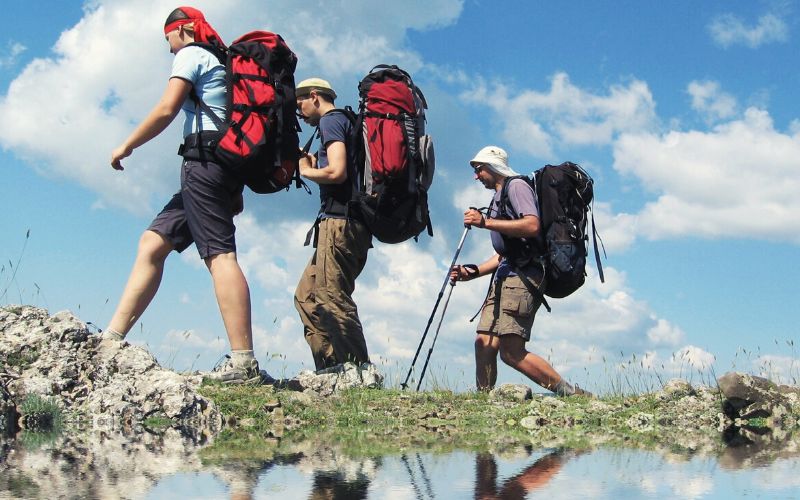When spending time outdoors, wearing the right hiking attire can make the difference between a good time and a miserable one. One of the trickiest decisions to make for most of us concerns leg coverage – do we want the full-length coverage and protection of pants or the light, airy freedom of shorts?
In this short guide, we’re going to attempt to settle the debate once and for all. We’ve also included some advice on alternatives like zip-off pants, skorts, and leggings. Read on to learn more!
Table of Contents
When length matters: All You Need to Know
The Argument in Favor of Wearing Shorts
Lighter
Shorts simply weigh less than long pants. While the weight savings might seem insignificant, ounce-counting minimalists will jump for joy!
They Keep You Cooler
Wearing shorts, of course, can help you cool off in warm weather. Since shorts are cut off above or at the knee, they allow for more airflow and breathability. No matter how ventilated hiking trousers might be, there’s nothing like a cool breeze on your legs in the scorching heat!
So if it’s hot (80s or above) and other factors allow it, ditch the pants and treat yourself to the cool breeziness of hiking or running shorts.
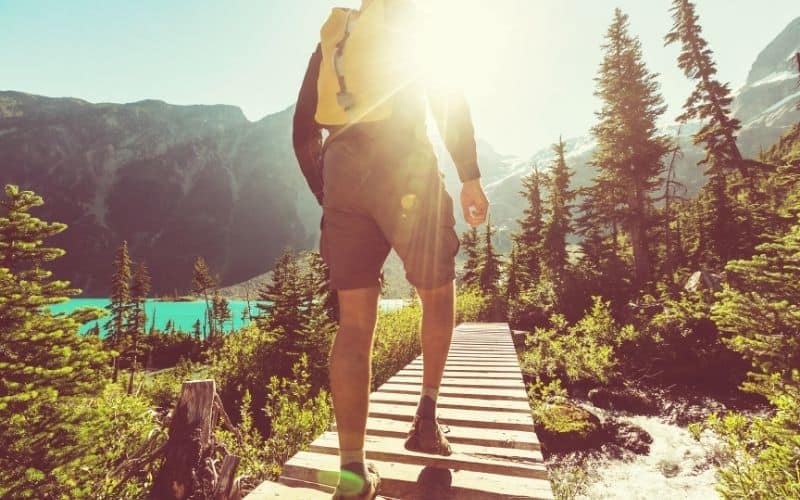
Less Noise
Shorts are arguably quieter than pants. Some types of hiking pants make an undeniable “swish, swish” rustling noise as you walk. While this might not bother everyone, it can drive some noise-sensitive hikers crazy. If you like your peace and quiet in the great outdoors, therefore, you might be better off wearing hiking shorts.
Less Restrictive
Shorts don’t cover as much of your legs so they allow for a greater range of motion. Whether it’s jumping over a log, scrambling over boulders, or jumping for joy as you reach a summit, there’s no denying that shorts are less restrictive.
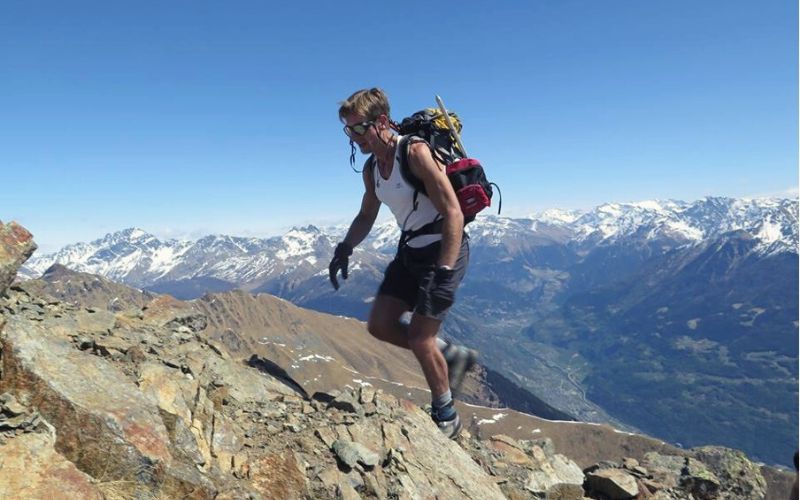
Better in Light Rain
One of the most frequently cited reasons that hikers love shorts is that they fare better in light rain.
Despite all the advances in modern, quick-drying fabrics, most hiking pants still need considerable time to dry after getting wet. Some people prefer the feeling of shorts in rainy weather rather than the feeling of cold or damp fabric on their skin while on a hike.
With all this being said, you need to watch out for heavy rainfall. Without pant legs to absorb some of the rain, you risk water droplets running down your legs and right into your socks and hiking boots. Not only is this incredibly uncomfortable, but it can also lead to other issues like blisters and chafing.
Easier to Keep Dry
If you’re hiking on wet or muddy terrain, your pants can get dirty or wet around the ankle and shin. Since wet pants tend to sort of “suction” around your legs, it can lead to a pretty uncomfortable experience. Shorts can help you avoid this problem during wet or muddy hikes.
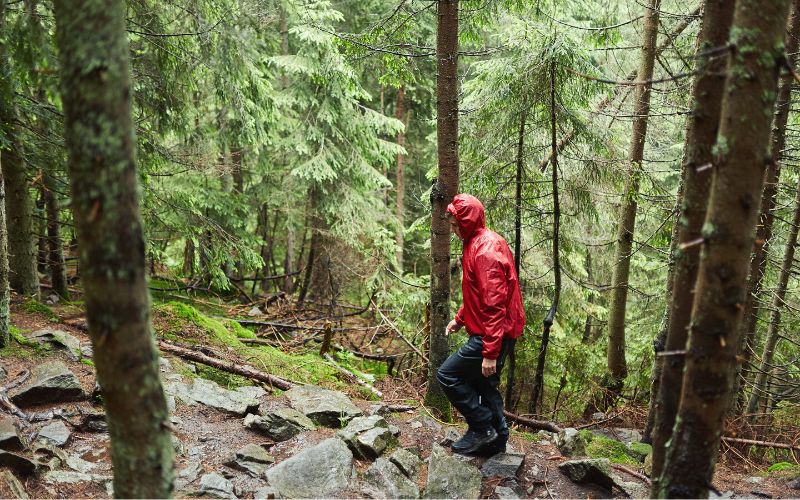
The Argument in Favor of Wearing Pants
Sun Protection
If you’re hiking in sunny weather, sun safety becomes important. By covering more of your skin, hiking clothes like longer pants offer better protection from the sun’s harmful UV rays. This is especially important if you’re hiking on a sunny trail with little shade.
But believe it or not, you can get sunburned even on a cloudy day. So before you swear off your long pants, be sure to check the actual UV index for the day.
Protection From Cuts and Scrapes
Tripping and falling while out on a hike is common. If you do slip, you’re going to be real thankful you’re wearing pants! By covering your skin, wearing hiking pants can help protect you from cuts and scrapes from sharp rocks or branches.
Wearing long pants is particularly important if you regularly head into rugged terrain, where you’re more likely to scuff your ankles and shins on rocks and bushes.
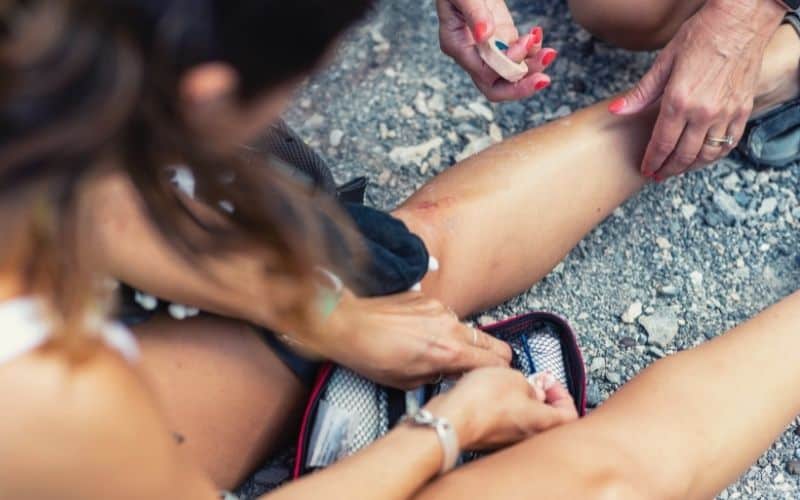
Protection From Poisonous Plants
If you regularly hike off-trail, you probably already know the danger of certain plants like poison ivy or poison oak. Full-coverage hiking clothing like pants can help protect you from brushing up against any nefarious plants.
Just remember that wearing pants is not a guarantee that you won’t fall prey to a nasty rash. All it takes is for you to inadvertently touch your face for a rash to occur.
If you’re not sure of the local plants or flora, fight the urge to venture off the beaten path!
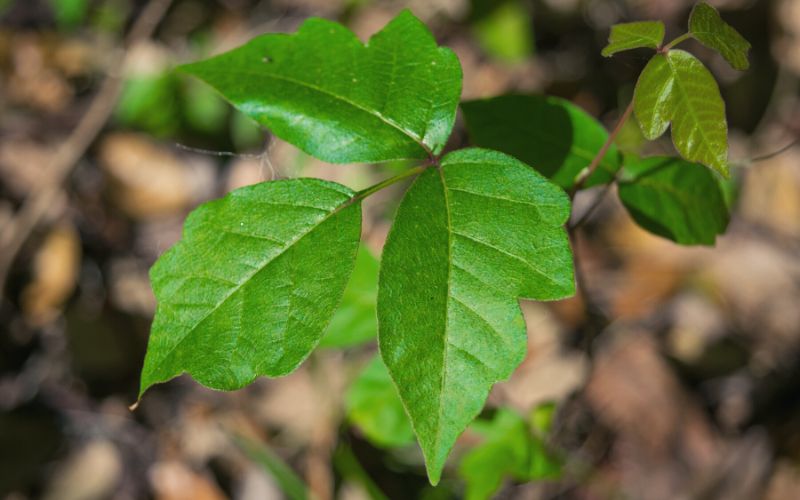
Protection From Bugs/Ticks
If you live anywhere ticks are prevalent, you probably already know the importance of wearing pants while hiking. A common method for preventing ticks is to wear long pants with the cuffs tucked into socks. That way, ticks, mosquitos, and other creepy crawlies have no way of accessing your bare skin.
If you do opt for pants to protect you from insects, remember to choose fabrics that are lighter in color. That way, it’s easier to spot bugs like ticks against the lighter-colored fabric.
Remember that wearing pants doesn’t make you immune either! You’ll still want to check yourself thoroughly for ticks and bugs after every hike.
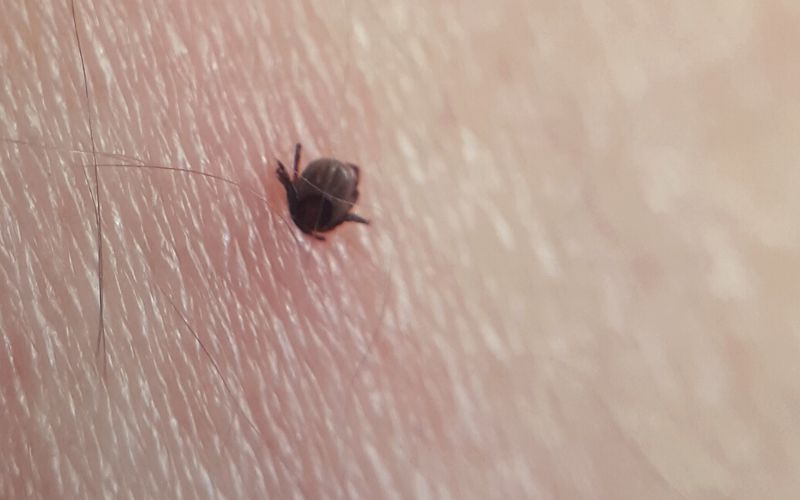
Protection From the Wind
Longer pants can provide some much-needed protection on extra-breezy days. Not only will they help keep your legs warm, they’ll also protect you from any small debris (sand, dirt) that’s being blown around and attacking your skin like legions of tiny airborne pins.
Extra Warmth
Seems pretty obvious, right? When you wear longer pants, less of your skin is exposed to the elements, which keeps you nice and toasty warm. By providing better insulation, pant legs offer more protection from cold weather conditions. You can even buy pants that are fleece-lined for extra warmth.
Temperatures can drop quickly as you ascend. When choosing between shorts and pants don’t forget to account for temperature differences due to elevation!
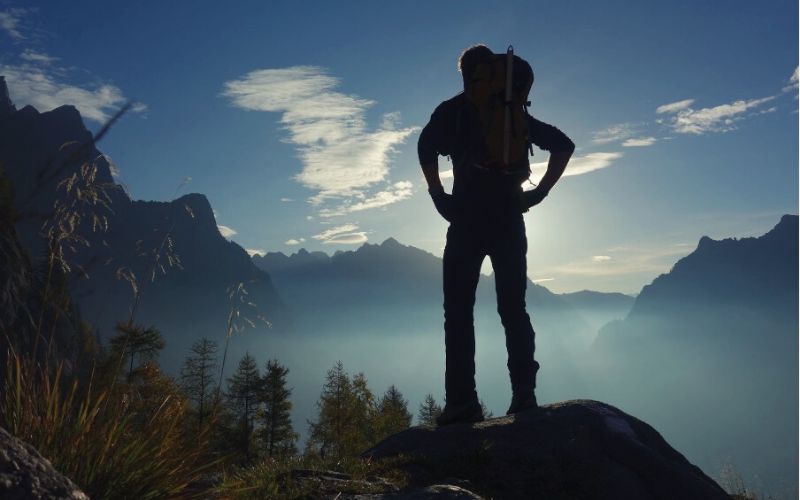
Prevent Chafing
If you’ve ever experienced chafing then you know how miserable it can be. Hiking is already a sweaty activity, and the repeated motion of walking combined with extra moisture from sweat can cause your thighs to rub together and even lead to painful rashes. Hiking pants or leggings tend to offer better protection against chafing than shorts.
More Storage
Many hikers prefer pants simply because they offer extra pockets for storage. If there are certain small items you don’t want to keep in your backpack, then a pair of long pants with cargo and rear pockets will be a good fit for you!
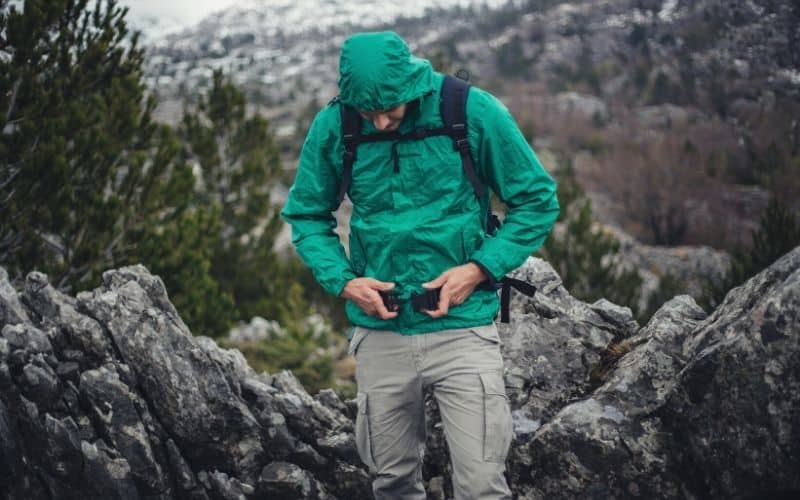
Alternatives
If neither shorts nor pants strike your fancy, there are some other alternatives.
Convertible Hiking Pants
Convertible pants, also called zip-off pants, are trousers where the bottom half of the legs can be zipped off, transforming them into shorts. Their ability to become both pants and shorts offers both versatility and weight savings.
Convertible pants are also a great option for backpacking, thru-hiking, or any time you expect that the weather might change suddenly or frequently. Being able to transform your pants into shorts allows you to adapt to various terrains and temperatures.
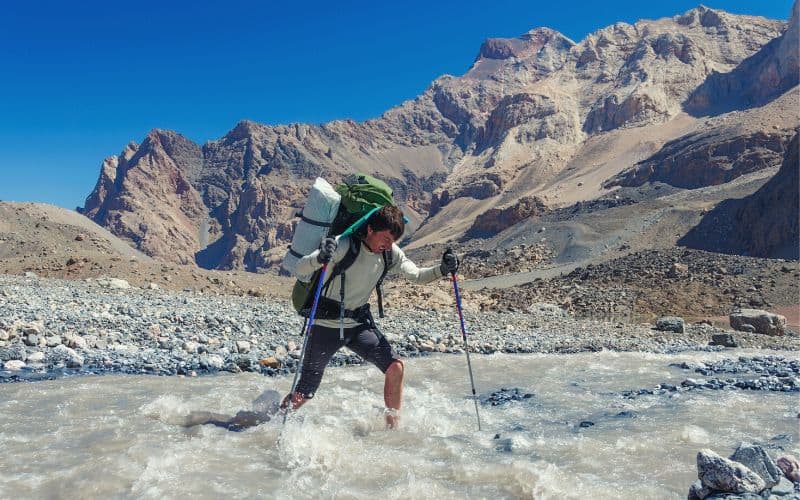
The negative is that historically convertible hiking pants were bulky and quite unsightly. Thankfully, modern iterations of convertible pants are tackling these challenges. These days, you can find convertible pants that are lightweight, breathable, and easy on the eyes.
Leggings and Yoga Pants
Leggings and yoga pants are other popular choices that strike a balance between the coverage of pants and the versatility of shorts. Most outdoor brands now offer leggings designed specifically for hiking that are built with features such as rip-resistant fabric, pockets, and even built-in bug-repellent.
Most fans of hiking leggings will also tell you that they are the most comfortable option by far.
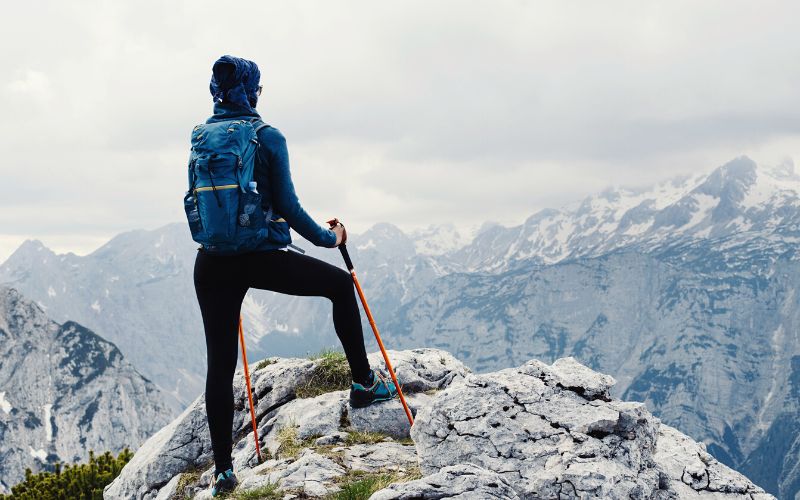
Skorts
A hiking skirt (or skort) is another option. These are skirts that have built-in shorts underneath to prevent wardrobe malfunctions. Hiking skirts offer style, breathability, and a great range of motion.
Jeans?
Technically, jeans are also an alternative to both hiking pants and shorts. But while you can hike in jeans, it doesn’t mean you should! Jeans lack the breathability, moisture-wicking capabilities, and comfort of other alternatives. Worst of all, if jean fabric gets wet it takes an incredibly long time to dry.
While you might get away with it on a short trek, if you plan on doing any regular hiking, do yourself a big favor and invest in some non-cotton shorts or pants for hiking.
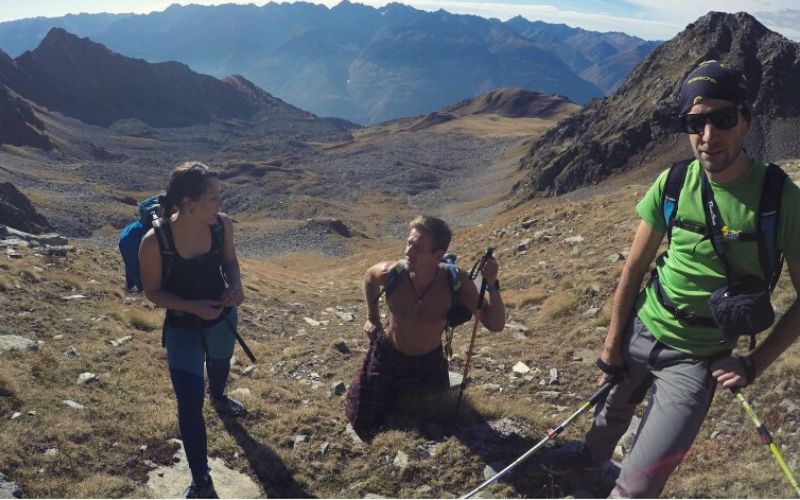
Shorts or Pants for Hiking: The Verdict
In conclusion, hiking pants or alternatives like convertible pants or leggings are going to be the better option in most situations.
Hiking pants simply offer more protection against the elements, the sun, poisonous plants, branches, bugs, and rough terrain.
If you’re worried about overheating, remember that most modern hiking pants are made from durable but lightweight materials and designed with ventilation in mind.
While it might be tempting to wear hiking shorts on hot days, you need to make sure you’ll be hiking on a well-groomed trail that is free of ticks, brambles, and poisonous plants. You’ll also want to keep in mind that conditions on the trail can change rapidly, so if you do wear shorts, come prepared.
Happy Hiking!
There you have it! There really is no right or wrong answer when it comes to what you wear on your pins while hiking. However, we hope the above demonstrates that certain factors make choosing one or the other a better option in different conditions.
Let us know which team you are on in the comments box below! And please feel free to share this post with your friends!
